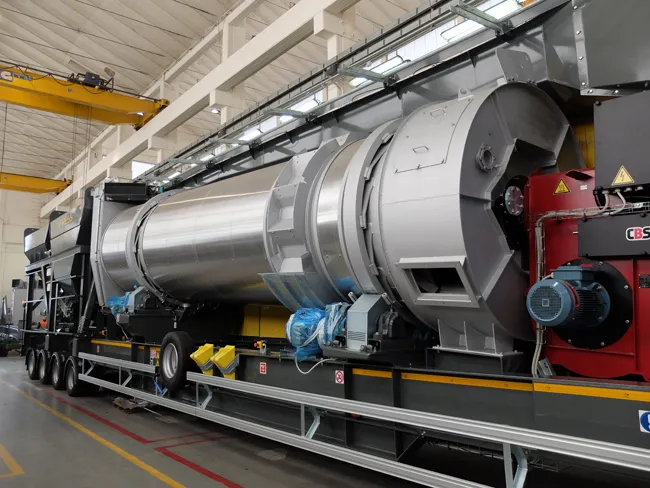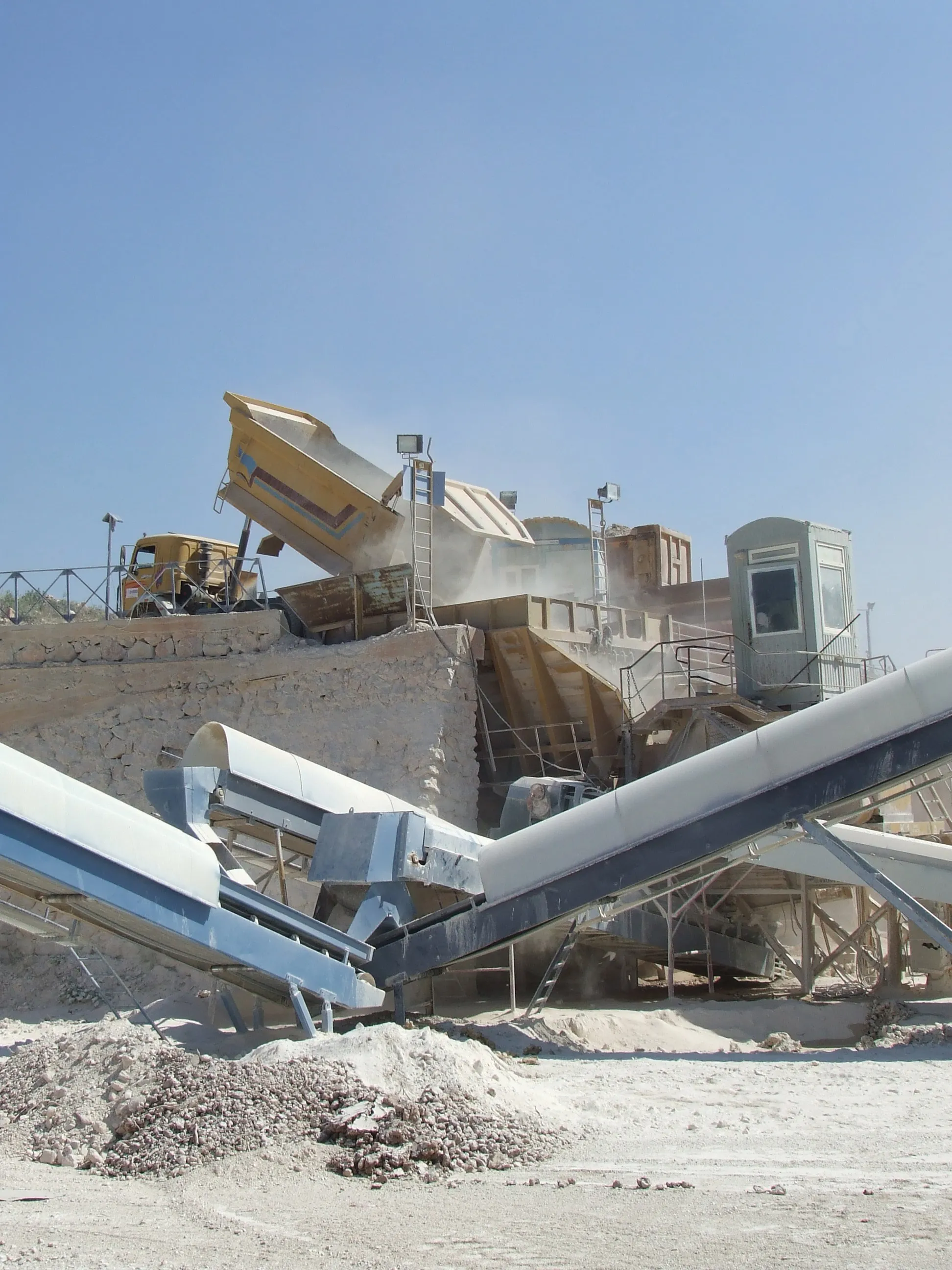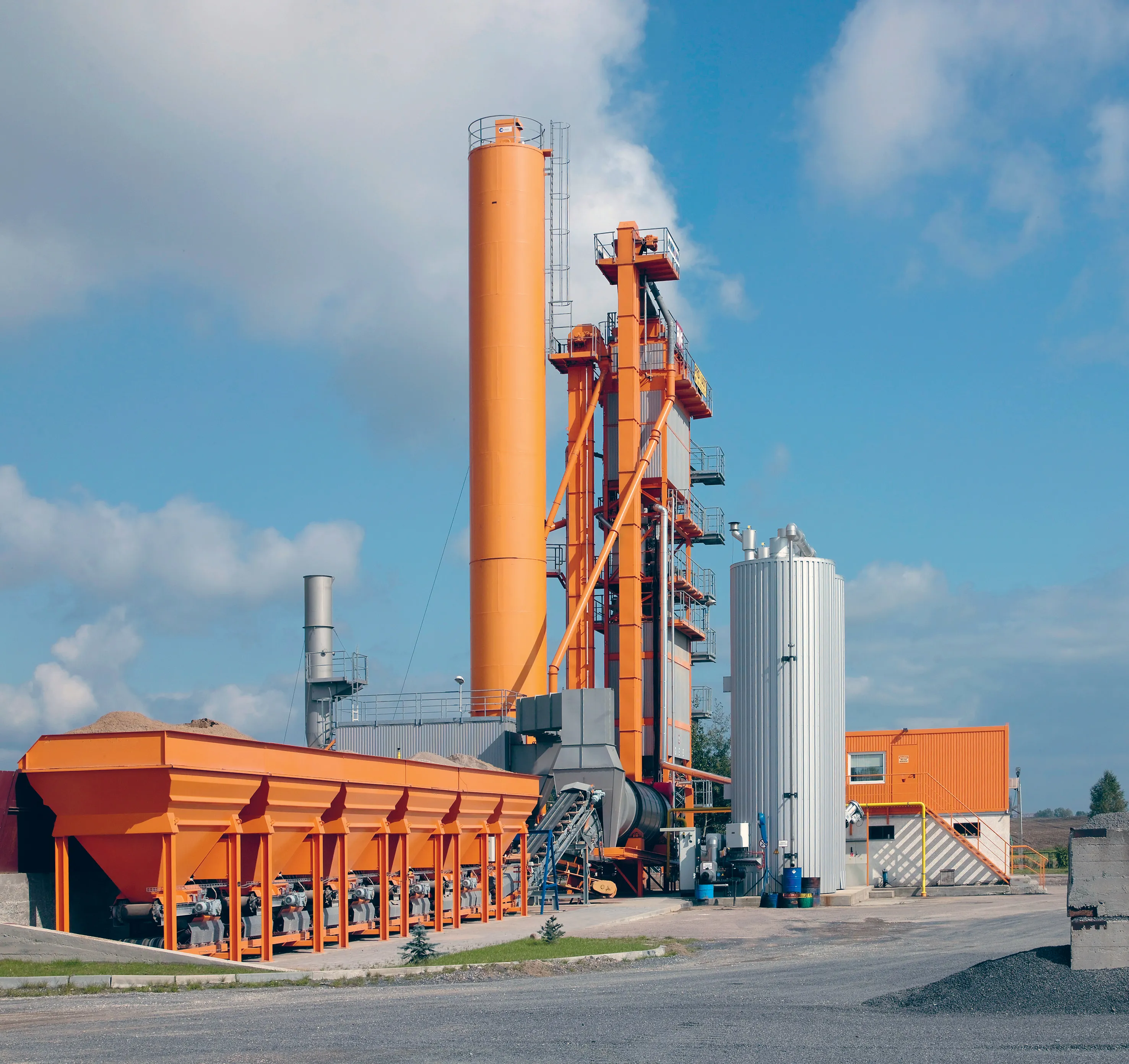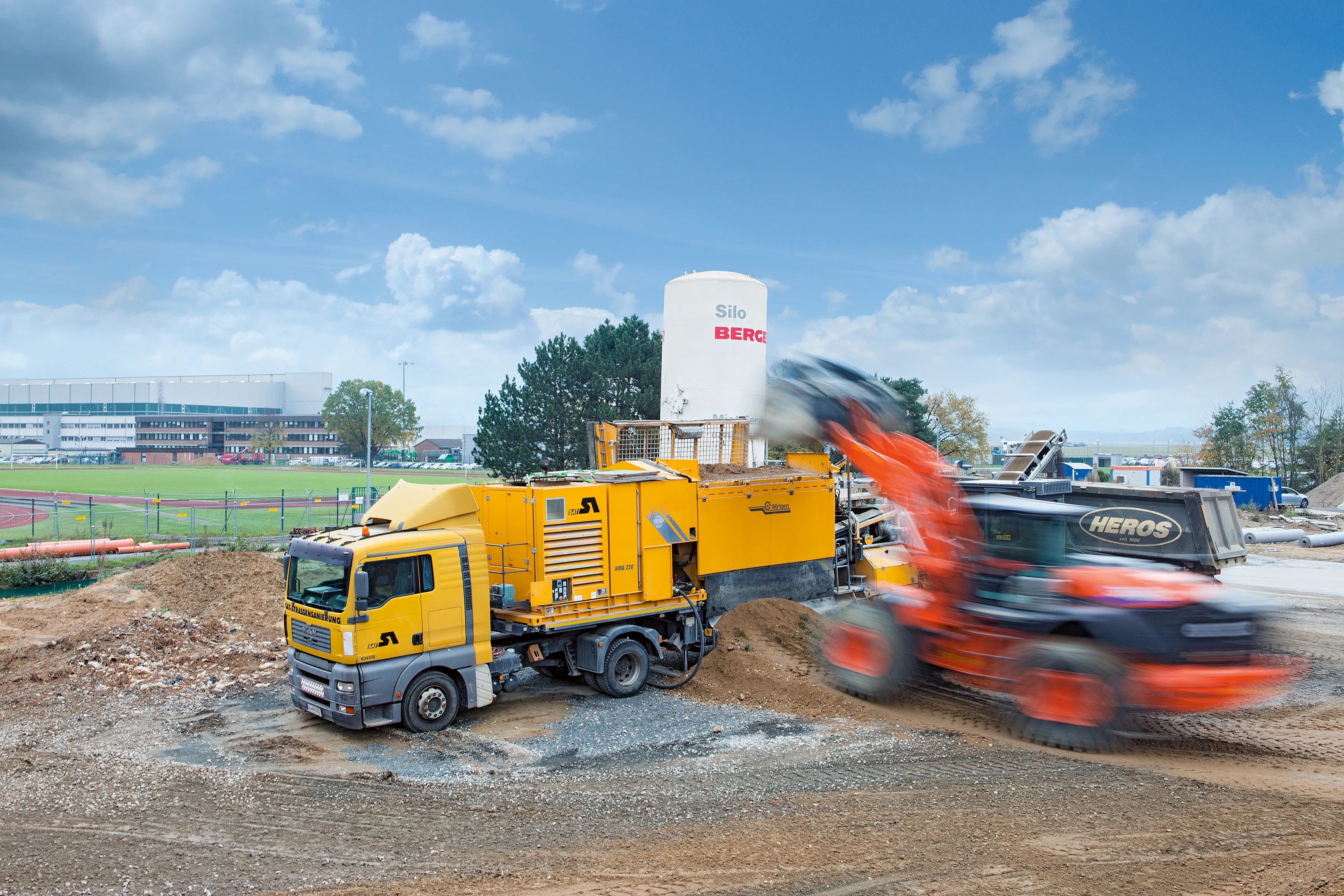
Andrea Zanoletti is in charge of this range and explained that the plants are designed for maximum mobility. He said, “With only two trailers, you have a complete asphalt plant.”
The existing Xpress 2500 model offers an output of up to 250tonnes/hour. However, the new Xpress 1500 and 1500P offer outputs of 150tonnes/hour, while the larger Xpress 2000 and Xpress 2000P offer outputs of up to 200tonnes/hour.
Although designed for mobility and retaining similar features, performances vary. The 1500 variants have 1.5tonne capacity mixers while the 2000 machines have 2tonne capacity mixers and the various models feature different burners, to suit the throughput capacities. All the Xpress models share the same ease of transport and fast erection capabilities. Just 3m wide, 21m long and with the trailers weighing 40tonnes, there are no transport restrictions when moving the separate units by road. Zanoletti said, “You don’t need special permits to transport them.”
Zanoletti said, “The USP is its super mobility. In just one day you can put it into operation.”
The plant features a hydraulic raising system for the mixer, helping speed assembly onsite. Zanoletti explained that a simple recycling circuit can be added if required, allowing the plants to use up to 30% RAP in the feed. Meanwhile, using a ring and mixer system, up to 50% RAP can be used in the feed. Other capabilities include a warm mix output, as well as an optional foamed bitumen kit.









